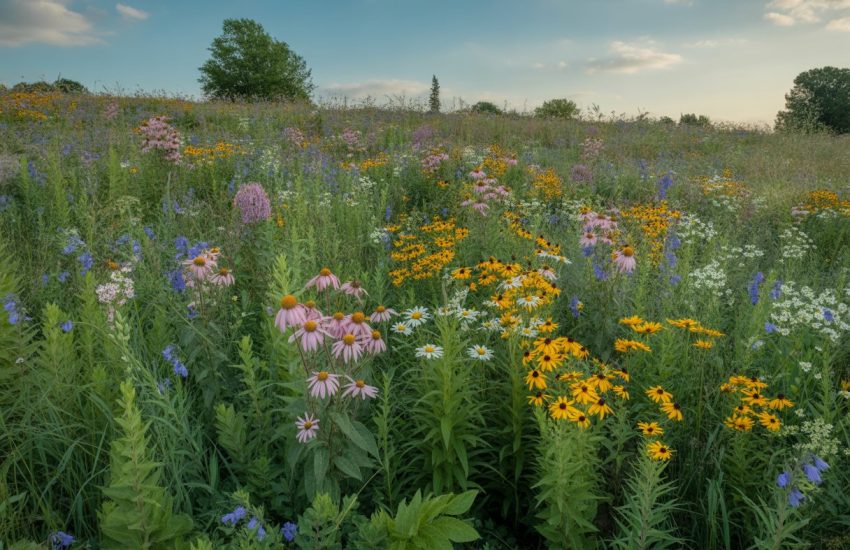Herb Garden For Beginners
There are several justifications for starting a herb garden. Are the gardening videos on the internet inspiring to you? Are you interested in using your herbs but unclear about how to get started? When brewing your tea or creating delicious meals, fresh herbs are fantastic.
Additionally, most herbs thrive in various environments, making them ideal for novice gardeners. Would you like to start your herb garden? Follow the beginner’s guide to growing herbs below to get started.
If so, you must understand the fundamentals of novice gardening. While designing a beginner’s herb garden while seated on the sofa is simple. In practice, it takes courage and perseverance. When you consider the journey of seed from seedling to your table while eating, the flavor of homegrown foods multiplies.
It won’t take long for you to create your organic herb garden if you want to cultivate herbs for your consumption or profit. You might begin to generate good profits in less than a month. Here are some tips on how to succeed in the herbal industry.
Types of Herbs to Grow
A plant that provides roots, seeds, blooms, or fruit to enhance food or medication is known as a herb. Herbs are frequently employed medicinally to support the proper operation of numerous bodily systems.
Herbs fall into two primary groups.
- Culinary herbs – The fresh and fragrant elements found in culinary herbs, such as oregano, basil, cilantro, etc., can be used to season your favorite foods.
- Medical herbs – To treat several common disorders, medicinal herbs like chamomile, calendula, echinacea, etc. can be converted into teas, tinctures, lotions, and more.
Herbs for healing can be utilized for well-being and health. There is always more to discover about herbs and their uses, regardless of the kind you choose to grow. Start modestly and observe how your desire to learn about (and grow!) more herbs changes over time.
Starting Herb Garden Plans for Beginners
It would help to choose which plants grow before getting your hands dirty. The three most crucial factors to consider while growing herbs are the amount of sunlight and space you have available and the quality of your soil.
The majority of herbs don’t have very particular growing requirements. But having suitable plants for your surroundings will help you avoid wasting resources like time, money, and effort.
Annual Herbs vs. Perennial Herbs
Several herbs are perennials, meaning they grow again every year. Others are annuals that must be transplanted every year.
Watching perennial herbs reemerge each spring is quite remarkable. Rosemary, chives, and oregano are a few of my favorites. Verify each perennial variety’s hardiness in your particular growing zone.
Easiest Herbs to grow
This section is for you if you’re already familiar with the fundamentals of gardening and would like to get started with a few simple herbs!
Some herbs, mainly medicinal ones, are tough to grow. Fortunately, even those with a black thumb should try a few fantastic herbs! These simple-to-grow herbs include calendula, chamomile, catnip, sage, thyme, and basil. This selection of herbs is fantastic because they are simple to cultivate and provide you with a varied supply of culinary and medicinal herbs to play with throughout the season.
Sunlight Requirements for Herbs
Every plant needs light. But the amount of sunshine needed varies depending on the plant. While some herbs prefer to spend the entire day in the hot sun, others will turn yellow and droop after spending more than a few hours in the sun.
Check how much sunlight your garden plot receives each day before you go to the nursery to buy your plants. You should find out if your balcony or garden receives the following:
- Whole sun (about 8 hours of sunlight)
- Slight sun (a combination of morning, afternoon, or evening sun)
- Absence of sunshine
- Don’t stress over being precise. Just keep track of the amount of sunlight your garden area receives.
Popular herbs that benefit from exposure to the sun include basil, echinacea, oregano, stevia, lavender, and thyme. They will flourish in a warm, bright location that receives 6 to 8 hours of daily direct sunlight.
You can also plant mint, chives, parsley, lemon balm, and cilantro in your garden if you want to produce herbs that prefer the shadow. For these herbs to flourish, some shade is sufficient. Evening or morning shadow and afternoon sun are both good for them.
Space Requirements for Herbs
Space is another crucial aspect to consider when constructing a herb garden. Numerous herbs spread far and are pretty big. Any reputable guide to growing herbs will go through each herb and detail how much room it requires to thrive.
Herbs to grow in containers
Herbs can be grown in pots and even inside in some cases. These herbs will flourish in planters on a porch or balcony if you live in an urban area:
- If you allow it, mint will take over your garden. It won’t push out other plants if grown in a container.
- Sage needs soil that drains well, so planting it in a more prominent planter with the correct soil will result in a plentiful herb crop.
- The summer sun doesn’t agree with parsley. If you grow parsley in a container, you may move it out of the sun when it gets too hot.
- Chives, oregano, basil, and coriander are a few additional herbs that do well in little pots.
Check our article: Container gardening
Soil improvements for Herbs
Some plants have specific requirements for the type of soil. But most people just want dirt that drains smoothly. Making drainage holes at the bottom of the container is essential if you plan to grow herbs in pots since you want to guarantee that they have proper drainage.
You can increase soil drainage by incorporating organic debris or compost around your herbs. Perform this before planting. If your plants are already in the ground, you must spread a layer of compost around them and carefully mix it into the soil using a pitchfork. Avoiding having your herbs sit in water, which increases the risk of root disease, will improve drainage.
Purchase basic garden tools
Invest in high-quality gardening equipment if you intend to start a new garden. You might have to keep buying garden tools if you need more quality. The fundamental tools needed in a garden are as follows:
- Dirt Rake
- Spade
- Leaf rake
- Garden shovel
- Garden Knife
Don’t buy tools that are the wrong size or bad quality. Visit a garden center close by and purchase the proper-sized tools to lower the chance of damage. To prevent the spread of disease, keep the tools sharp and clean.
Water Supply for Herbs
You must provide water for the plants you grow. To make it simple to water plants, choose a place close to a source of drinkable water. Garden plants typically require one inch of water per week. Your task can be more challenging if you drag a hose and carry water buckets. Numerous plant diseases are also brought on by water splashing on the leaves and overwatering.
But not too much water! The tiny tags that came with my plants should be saved because they remind me how much water to provide. The basic rule is to wait until the herbs are dehydrated before watering them. Bring some light to them. Eight hours of sunlight daily is ideal; a window facing south is excellent.
6 Best Herbs for an Organic Herb Garden
Rosemary Herbs Benefits
Antioxidants and anti-inflammatory compounds found in high concentrations in rosemary may strengthen the immune system and improve blood circulation. Rosemary is a cognitive enhancer that can improve the quantity and quality of memories. Additionally, it has been demonstrated to enhance intelligence, focus, and alertness.
Rosemary Plant Requirements
When growing rosemary plants, give them sandy soil that drains well and at least six to eight hours of sunlight each day. Because rosemary cannot resist winter temperatures below 30 degrees Fahrenheit, these plants do best in warm, humid environments.
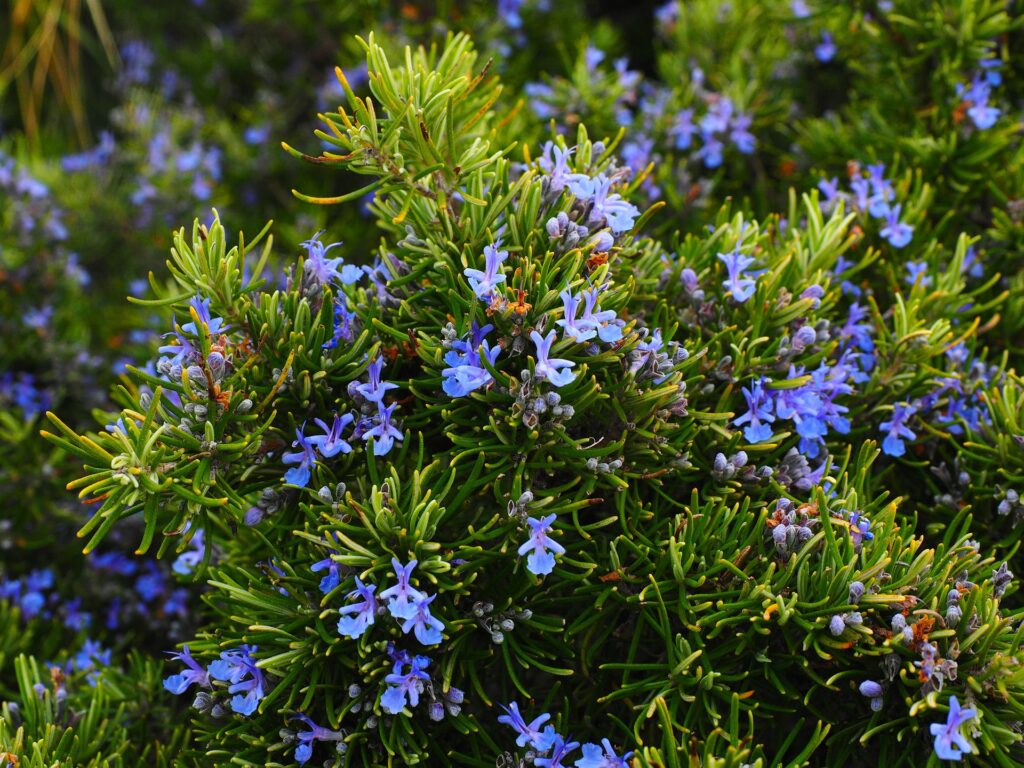
Chives Herbs Benefits
Most of the benefits are due to the flavonoid antioxidant content of chives. These antioxidants support improved heart health, a decrease in inflammation, and cancer prevention. They also aid in bodily cleansing and skin health improvement. Additionally, the fiber they are carrying may help with indigestion.
Chives Plant Requirements
Chives thrive in full sunlight and organically rich, well-drained soil. You ought to test your soil. The ideal pH ranges from 6.0 to 7.0. They can tolerate a little shade, but it is ideal to have six to eight hours per day of direct sunlight.
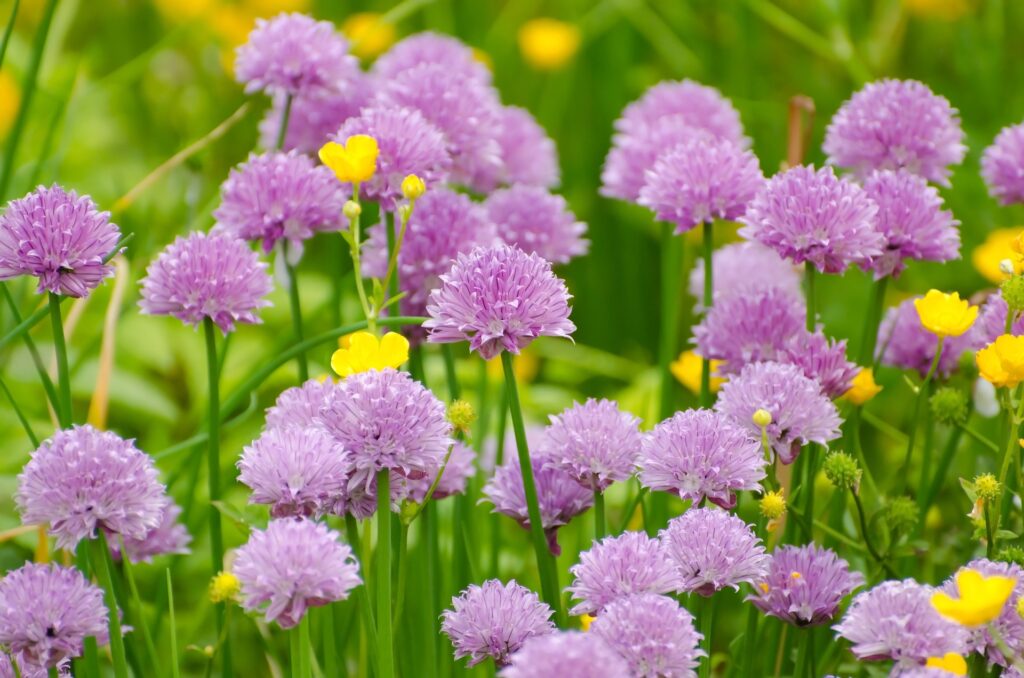
Oregano Herbs Benefits
The antibacterial properties of fresh oregano. It has phytonutrients that aid in the battle against staph infections. In addition to being high in fiber, vitamin K, manganese, iron, vitamin E, tryptophan, and calcium, it also contains a lot of antioxidants, which aid in preventing cell damage.
Oregano Plant Requirements
In a sunny area with healthy, well-drained soil with a pH of 6.5 to 7.0, plant oregano is 8 to 10 inches apart. Provide some shade if your plants are growing in a hot climate. Add several inches of rich organic matter to your native soil, such as old compost, to help new plants establish themselves.
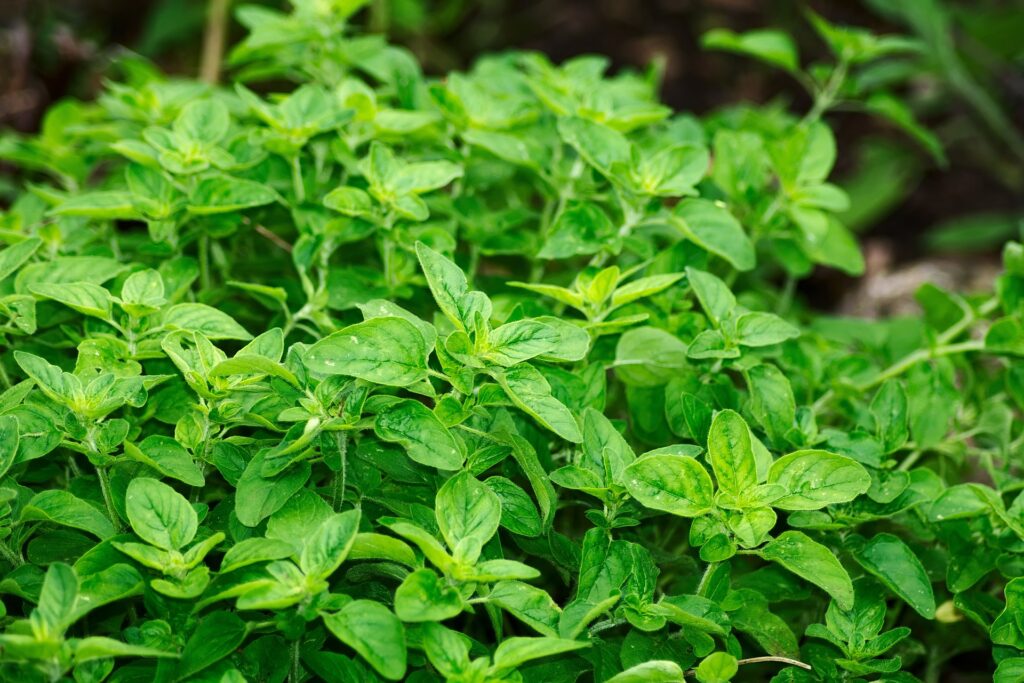
Sage Herbs Benefits
The leaf is used in the creation of pharmaceuticals. Sage treats digestive problems like heartburn, diarrhea, bloating, and concerns like loss of appetite and stomach discomfort. Along with lowering sweat and saliva production, it is also used to treat Alzheimer’s disease, depression, and memory loss.
Sage Plant Requirements
Hardy perennial sage can be grown in zones 5 to 8. It does well in full to some sun. If you’re growing it indoors or in pots, make sure it’s close to a window with plenty of sunlight.
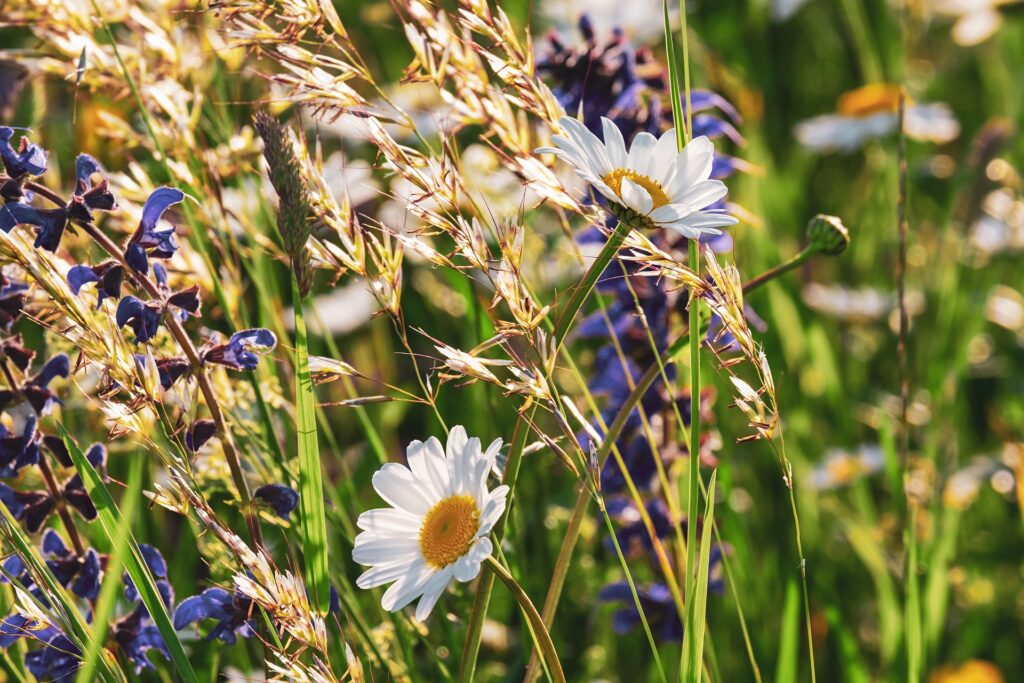
Thyme Herbs Benefits
Thyme is used to cure various ailments, including bronchitis, whooping cough, sore throat, colic, arthritis, upset stomach, stomach pain, and parasitic worm infections. Thyme thrives in heat and grows well in direct sunlight. If growing indoors in a container, place the plant in a bright window. To prevent “wet feet,” the soil must drain healthy plants in the garden alongside other perennials resistant to drought.
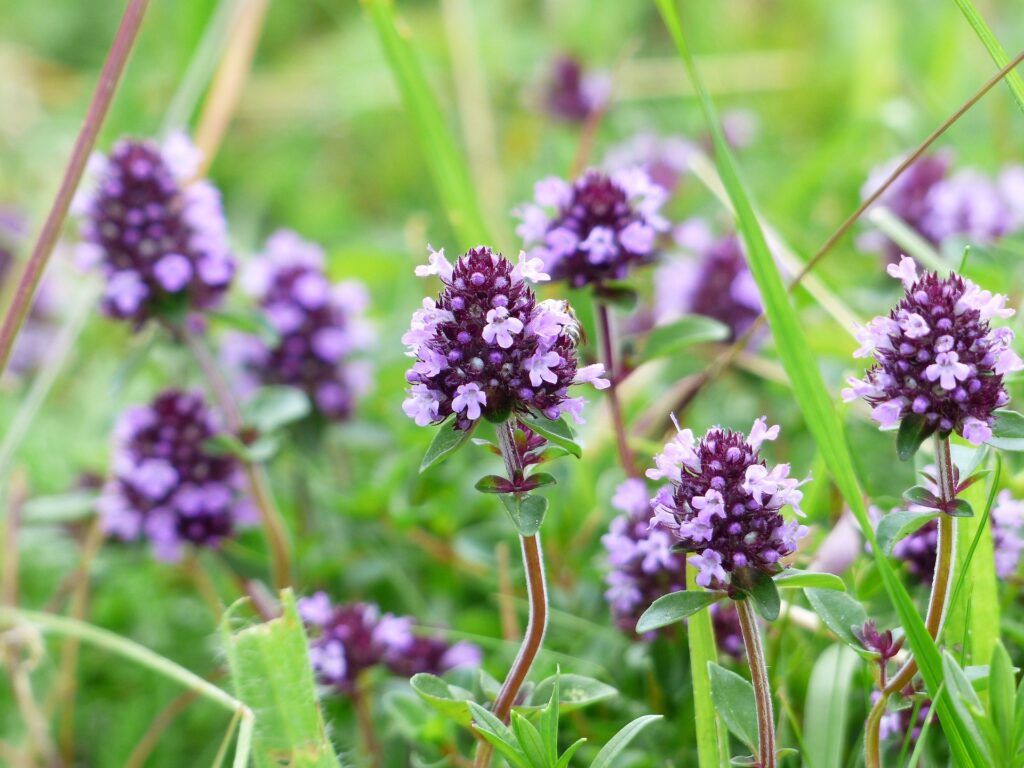
Basil Herbs Benefits
In basil, antioxidants abound. These antioxidants support the body’s fight against free radicals, which can harm cells and increase the risk of various illnesses.
Basil Plant Requirements
Although it can also flourish in some shade, basil grows best in a location that receives 6 to 8 hours of direct sunlight daily. Although the soil needs to be well-drained, it should have some moisture. Because raised beds and containers allow for better drainage, basil grows well.
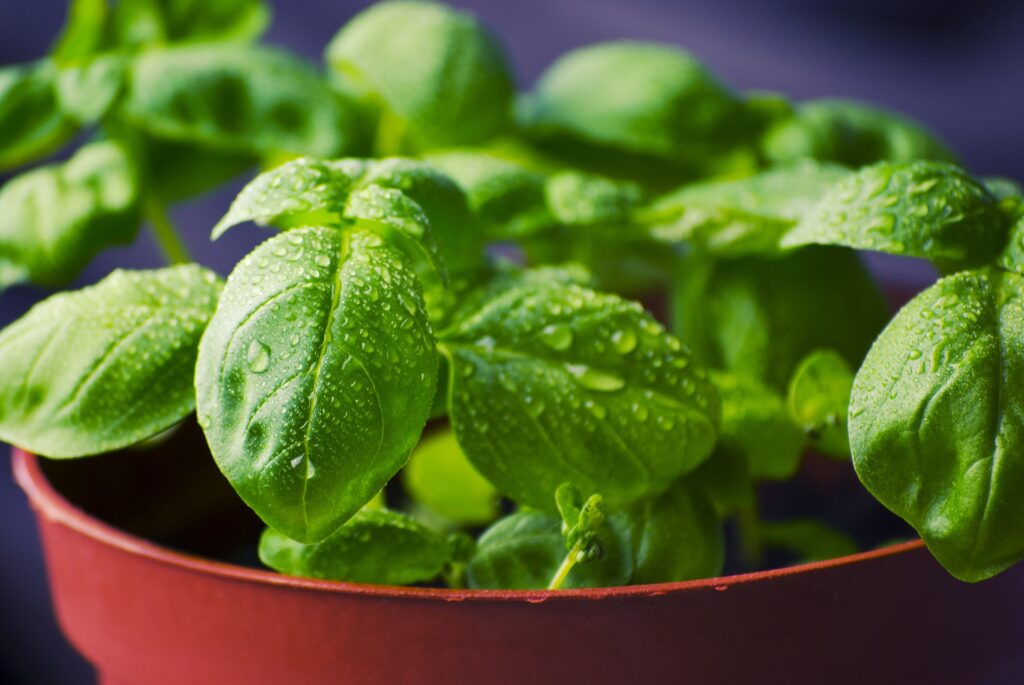
Conclusion
Making a beginner’s herb garden plan is simpler than you might believe. Just take a few simple precautions and take pleasure in your homegrown herbs. Although starting a beginner’s garden may be simple, it requires ongoing care and upkeep. Watch out for pests like aphids, slugs, and snails. To prevent these pests and protect the plants, use natural remedies.
If you are going on vacation, be sure your plants are being taken care of. Hire a professional to take care of your plants instead. You’ll quickly become an expert gardener once you’ve gained some experience as a novice.
FAQ
Although you can have a fall herb garden in some regions, April is usually the ideal season to plant herbs.
The sort of herbs you are growing and whether you are beginning from seed or transplanting will largely determine when to plant them.
Water the new transplants frequently. Ensure your herbs receive an inch of water each week during the growing season once they are established. Water and soil the plants each day because they are new.
You will need to make larger planting holes if you grow herbs from bedding plants. Give the bedding plants plenty of room to spread out and grow by digging each hole to a width roughly twice that of the new plant’s root ball.

